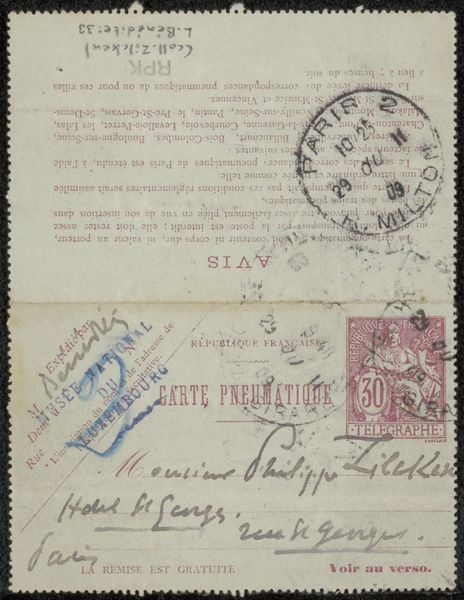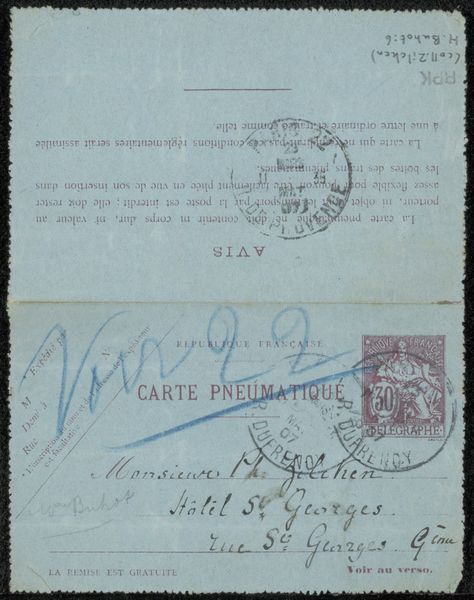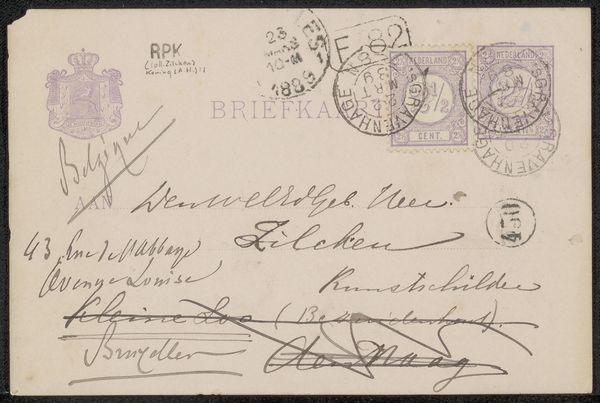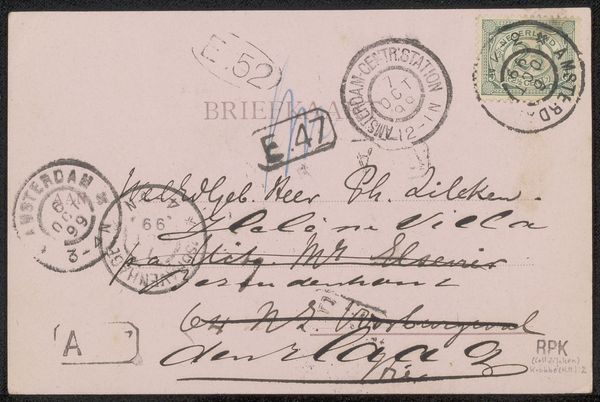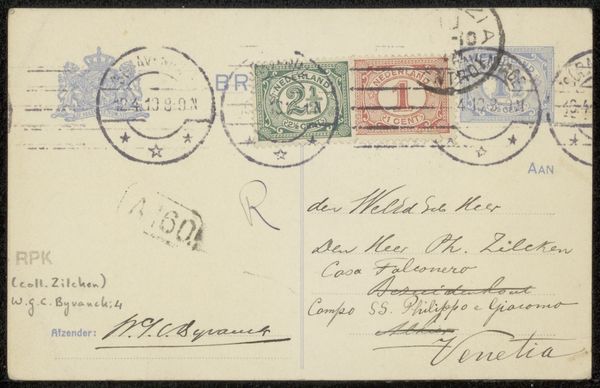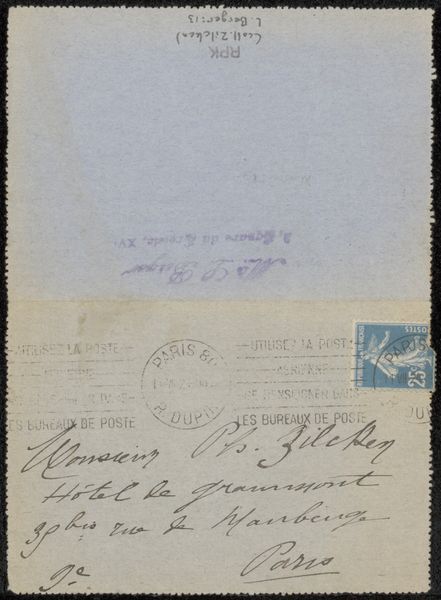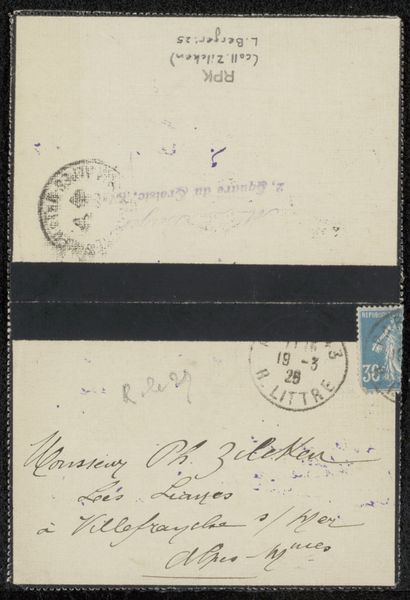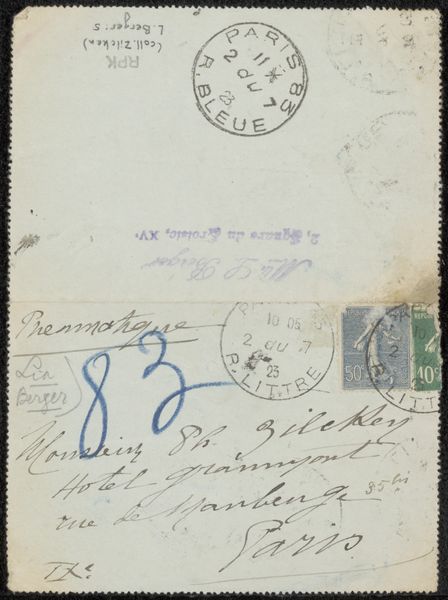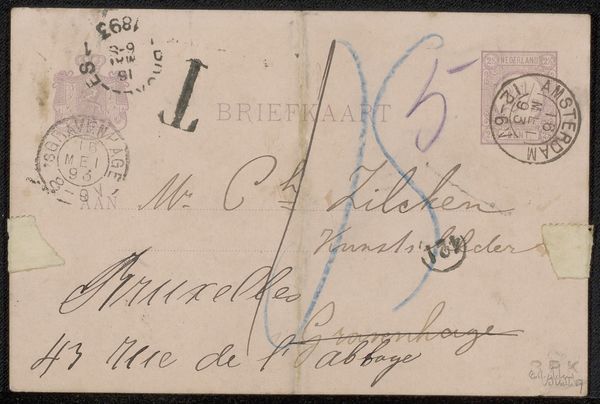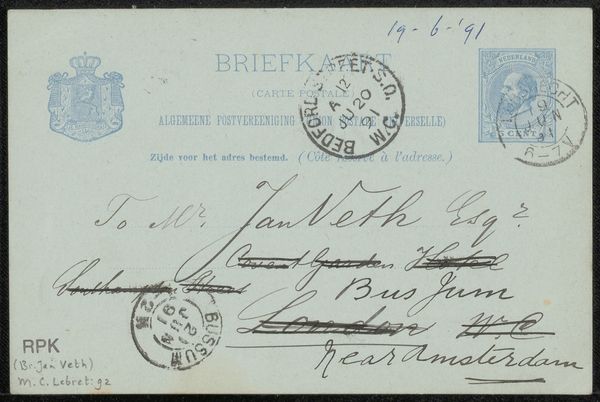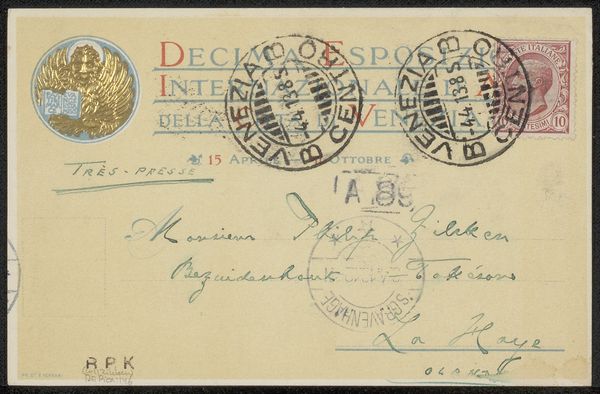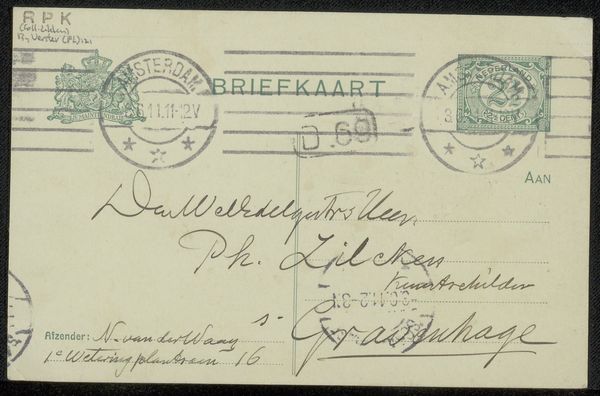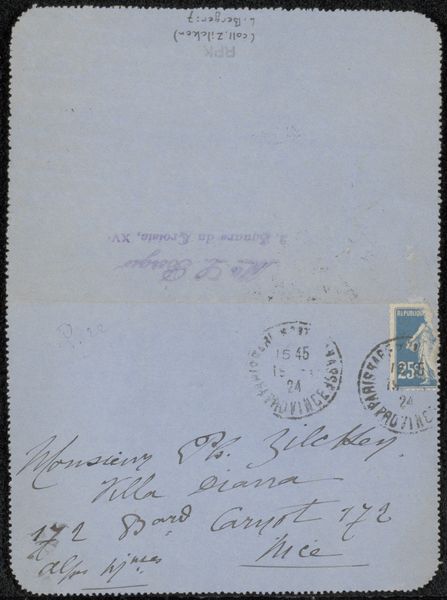
paper, typography
#
portrait
#
typography usage
#
type repetition
#
aged paper
#
hand-lettering
#
hand lettering
#
paper
#
typography
#
fading type
#
stylized text
#
thick font
#
annotation
#
columned text
#
calligraphy
Copyright: Rijks Museum: Open Domain
Curator: This is a carte pneumatique, or pneumatic post card, possibly dating from 1911 to 1915. We believe it's by J. Fujikawa and was sent to Philip Zilcken. Editor: My first impression is a sense of organized chaos. The layout is grid-like with its columns of text, yet it’s overlaid with these energetic hand-lettered additions in blue ink. The whole thing feels very immediate and personal, despite the formal typesetting. Curator: Exactly. The printed text itself details the conditions for pneumatic post, meant to be delivered rapidly through tubes across Paris. This new technology symbolized speed and efficiency, quite a modern marvel at the time. Look how handwriting and typography collide in ways to signal the importance of handwritten missives. Editor: Right, the standardized text gives way to the personal address scrawled on top, bridging the impersonal technology with human connection. I’m particularly drawn to the stamp and postmark. Note also the way "CARTE PNEUMATIQUE" leaps out amidst the more subdued printed information. The emphasis reflects the novelty of the communication form itself. Curator: Also notice the stylistic contrast in lettering. Some strokes in the signature above "Monsieur Zilcken" swell into thick, bold lines, others remain thin. There is also an almost illustrative quality in the postal stamp showing what looks like a harvest figure with overflowing cornucopia and flowing fabric—classical motifs meeting the needs of a modern postal system. Editor: Good point! The stylized text creates visual interest beyond just the message. This creates a dynamic tension within the composition, mirroring perhaps the cultural tensions of the time—between tradition and technological advancement. I also think the faded inks are really evocative of a different period in time. Curator: Absolutely. And considering Zilcken himself, who was an artist and art critic—one wonders what he thought of this particular piece of mail art, sent to him with love or regard. The pneumatic post—it wasn't just about speed, was it? It encapsulated dreams, and perhaps even the anxieties, of a rapidly changing era. Editor: It leaves me contemplating how even the most functional of objects, like a postcard, can reveal so much about societal values and aesthetics. This fusion of public utility and individual expression, frozen in time, presents an interesting lens on modernity itself.
Comments
No comments
Be the first to comment and join the conversation on the ultimate creative platform.
